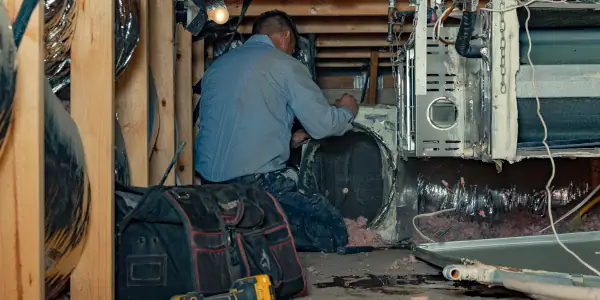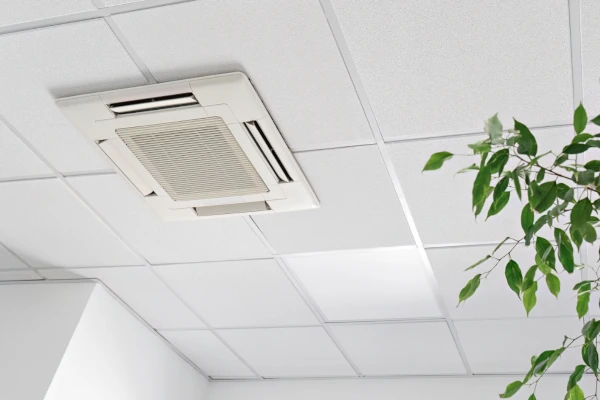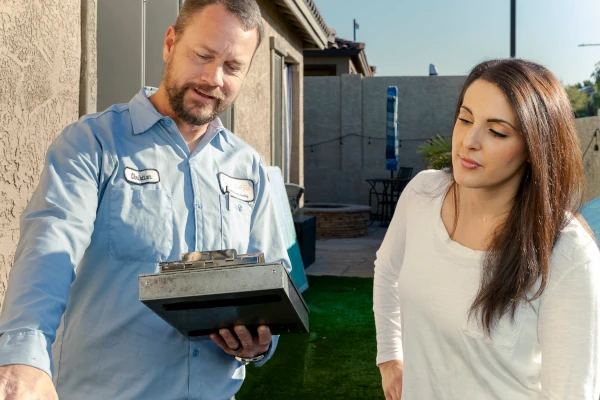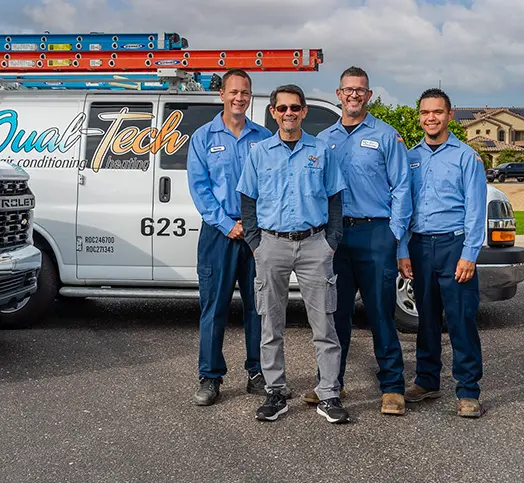Air filters play a crucial role in maintaining the efficiency and air quality of HVAC systems, especially in Arizona. Air filters trap airborne particles, preventing them from circulating through your home and potentially damaging your HVAC equipment. Proper filtration contributes to a healthier living environment and prolongs the life of your heating and cooling system.
Selecting the ideal AC filters for Arizona, however, isn’t totally straightforward. It depends on various factors, including your HVAC system’s capabilities, local environmental conditions, and specific filtration needs for your household. In this article, we’ll cover what kinds of air filters there are to choose from, and which are best for your Arizona home.
Considering Airflow and How it Affects Filter Choice
A significant challenge for Arizona HVAC systems is undersized ductwork. According to industry estimates, approximately 80-85% of ductwork in Arizona homes is inadequate for their HVAC units. This issue affects air circulation and system efficiency, creating a unique set of considerations when it comes to choosing and maintaining air filters for optimal performance.
The presence of undersized ductwork directly impacts AC filters for Arizona. Rather than simply choosing the most effective AC filter available, homeowners must consider what their specific HVAC system can handle without compromising airflow. This balance between filtration and system performance is crucial for maintaining both air quality and energy efficiency.

What Types of Air Filters are Available?
Base Filter (Grass Catcher)
Base filters are low-budget filters that offer maximum airflow with minimal resistance. It’s a basic see-through filter that primarily catches large particles like cat or dog hair and grass, earning it the nickname “grass catcher.” While it allows for optimal system performance, its filtration capabilities are limited. It’s best suited for situations where maintaining airflow is the top priority, as it won’t significantly improve indoor air quality. There’s a reason it’s called “grass catcher”, since that’s about all it’s catching large particles. If you’re concerned about air quality, read on!
Pleated Filter

The pleated filter is a step up from the base filter, featuring an accordion-style design. This structure increases the filter’s surface area, allowing it to catch smaller particles like dust and dirt while minimally increasing airflow restriction. For Arizona’s dusty environment, pleated filers offer a balance between improving filtration and maintaining system performance, making it a popular choice for many households. However, it may restrict the airflow in systems with undersized ductwork.
High Filtration Filter
High filtration filters prioritize air purification over airflow. With a densely packed design capable of trapping smaller particles and allergens, it’s ideal for households with members who have asthma, allergies, or other respiratory concerns. However, its high filtration comes at the cost of airflow restriction. In some cases, using this filter may require modifications to the HVAC system, such as enlarging return ducts, to maintain proper airflow.
Thick, High Performance Filter
This filter represents the best of both worlds, prioritizing both filtration and airflow. At 3 inches thick, it provides extensive surface area for trapping allergens and small particles. Despite its high filtration capabilities, its design minimizes airflow restriction, allowing for efficient system operation. This filter type can contribute to a healthier home environment and more efficient HVAC performance, often lasting up to six months before needing replacement. This kind of premium requires an upfront cost investment, and may prove overkill when compared to cheaper filters.
What Air Filter is Right For You?
When selecting the best air filters for Arizona homes, it’s crucial to consider its impact on airflow and overall system performance. Filters that are too restrictive can strain your HVAC system, reducing efficiency and potentially causing damage. In Arizona, where many homes have undersized ductwork, this is particularly important. The ideal filter should balance filtration with maintaining proper airflow to ensure your system operates at peak efficiency. If you’re concerned about whether your ductwork is too small or want to invest in bigger ductwork, then you can give us a call at (623) 234-4608.
Filtration efficiency refers to a filter’s ability to capture airborne particles of various sizes. Higher efficiency filters can trap smaller particles, including fine dust, pollen, and some bacteria. However, increased filtration often comes with greater airflow restriction. It’s important to choose a filter that provides adequate filtration for your needs without overly compromising system performance. Some factors to consider when choosing what kind of filter you want are the local air quality, whether you own pets or not, and whether activities like cooking, gardening or smoking happen indoors.

For households with members who have allergies, asthma, or other respiratory concerns, filtration becomes even more critical. High-efficiency filters that can capture smaller particles like pollen, pet dander, and dust mites may significantly improve indoor air quality and alleviate symptoms. However, using these filters may require system modifications to maintain proper airflow.
How Often Should I Replace AC Filters In Arizona?
Base Filter (Grass Catcher)
The base filter, or “grass catcher,” requires frequent replacement due to its minimal filtration capabilities. It should be changed every 30 days or sooner. Regular replacement ensures the filter can continue to catch larger particles without impeding airflow to your HVAC system.
Pleated Filter
While manufacturers may suggest up to 90 days, in Arizona’s climate, pleated filters should be checked monthly, especially during summer when AC usage is high, and local monsoon storms can kick up quite a bit of dust. It’s recommended to change or at least check these filters every 30 days to maintain optimal performance and air quality in your home.
High Filtration Filter
Despite being marketed as 90-day filters, high-filtration filters in Arizona should probably be replaced every 30 days, especially in Arizona. Their efficiency at trapping dirt and dust means they load up quickly. Regular replacement ensures continued high-quality air filtration without overly restricting airflow to your HVAC system.
Thick, High Performance Filter
These advanced filters can last up to 6 months or longer, depending on your specific situation. Their large surface area and efficient design allow for extended use. However, it’s still advisable to check these filters regularly and replace them when visibly dirty or as recommended by your HVAC professional.
It’s worth considering what kinds of air filters you use and how they can affect your airflow and your air quality. When you’re considering what the best AC filters for Arizona are, think about the needs of your family, what kinds of pollutants may be in your home, and what you’d like to invest in a filter. Cleaning up your air quality could help alleviate allergies and asthma, which affects many Arizonans.
When considering AC filters for Arizona, be sure to consult with a professional for guidance. They can assess your system, ductwork, and specific requirements to ensure you’re using the most effective filter without compromising your HVAC system’s efficiency or longevity. Our experienced HVAC technicians are happy to answer your air filtration questions! Call (623) 234-3608 and we’ll be happy to help.





